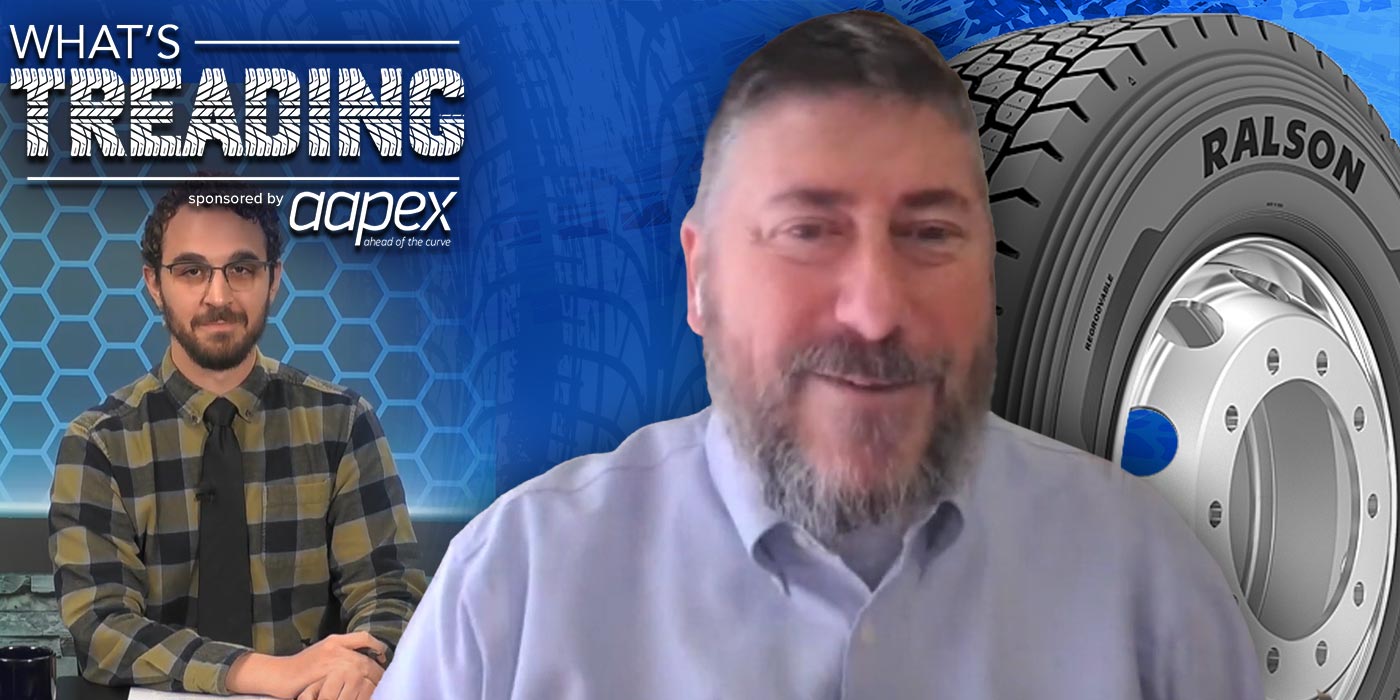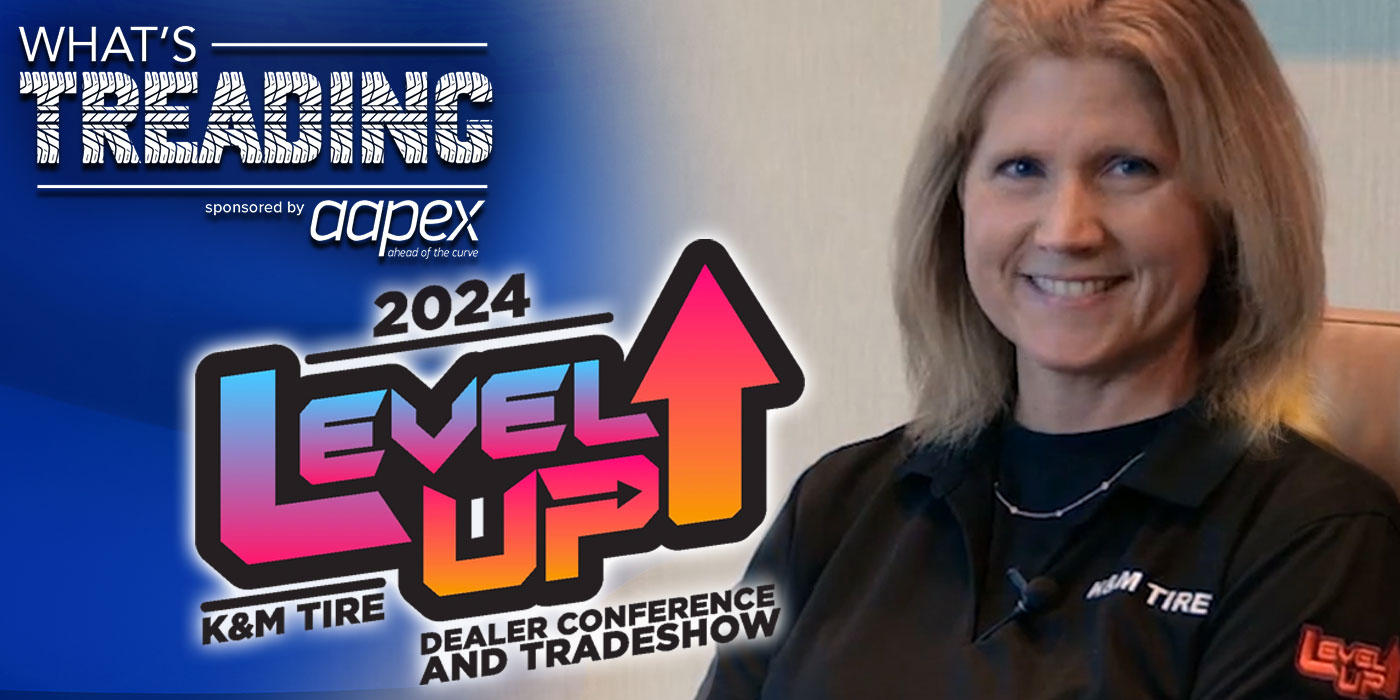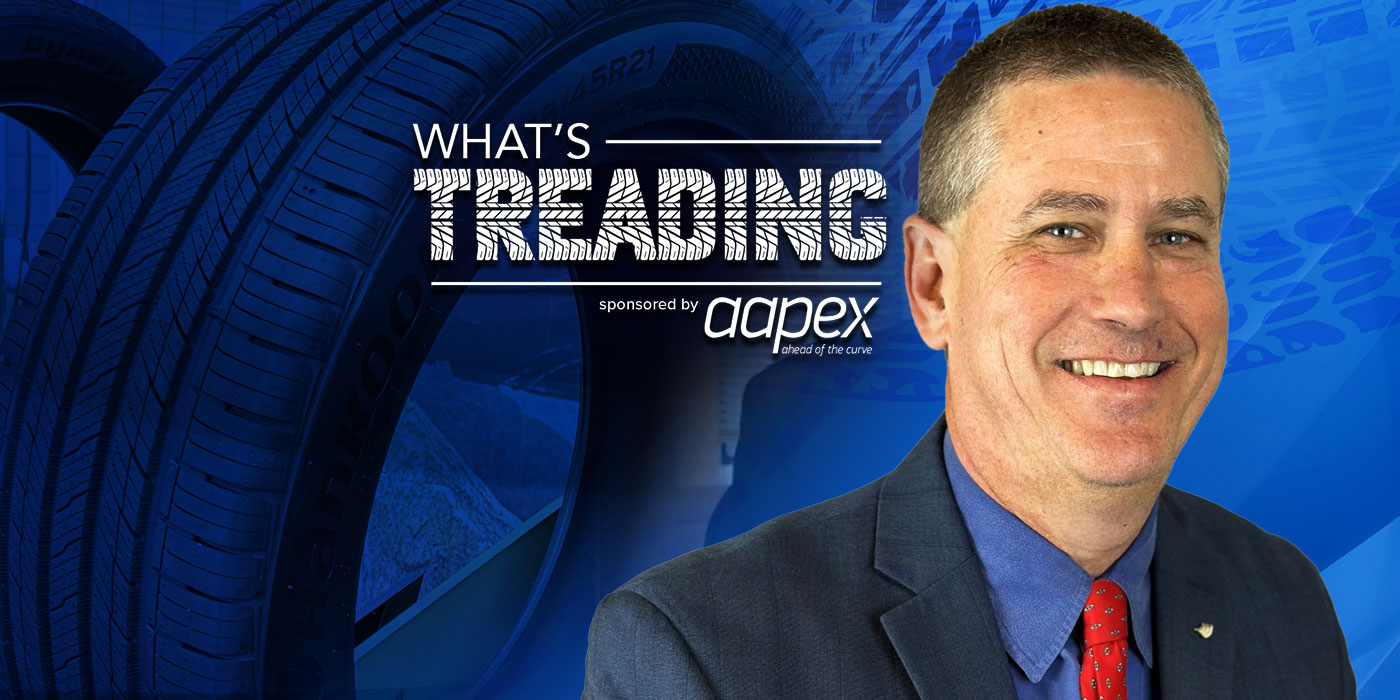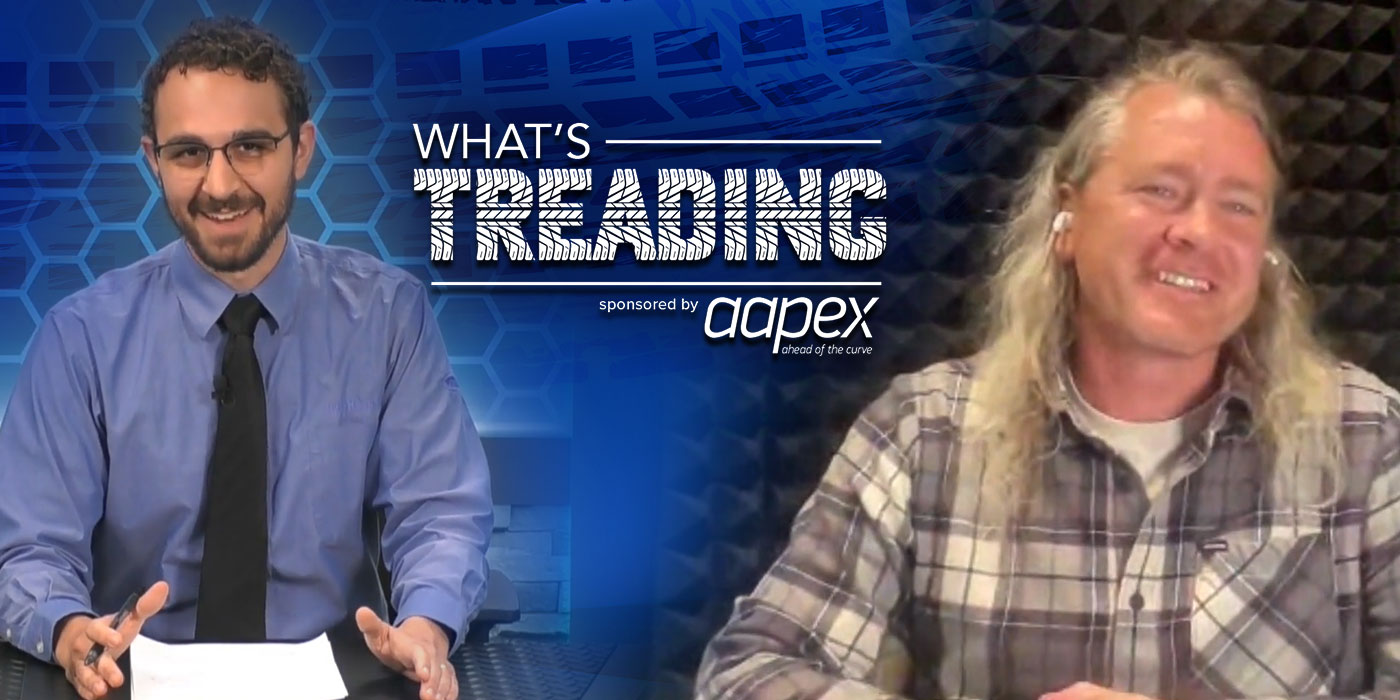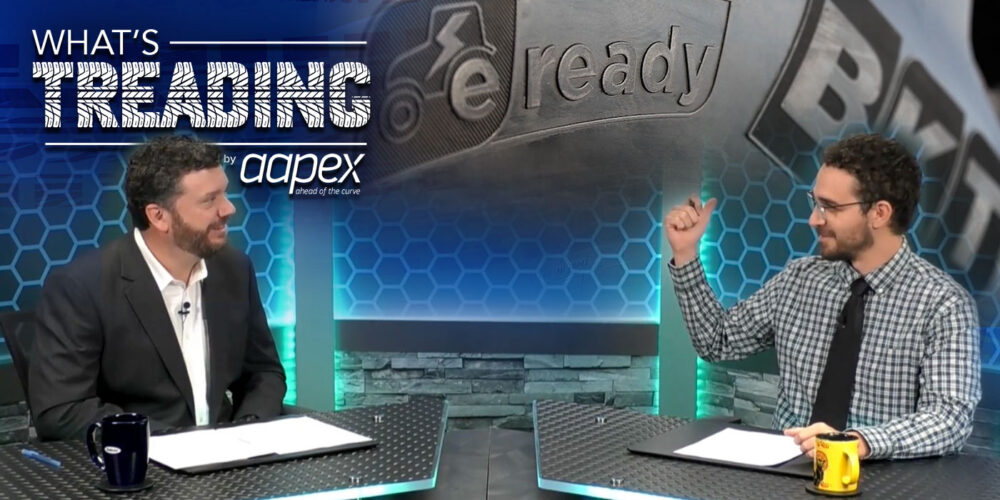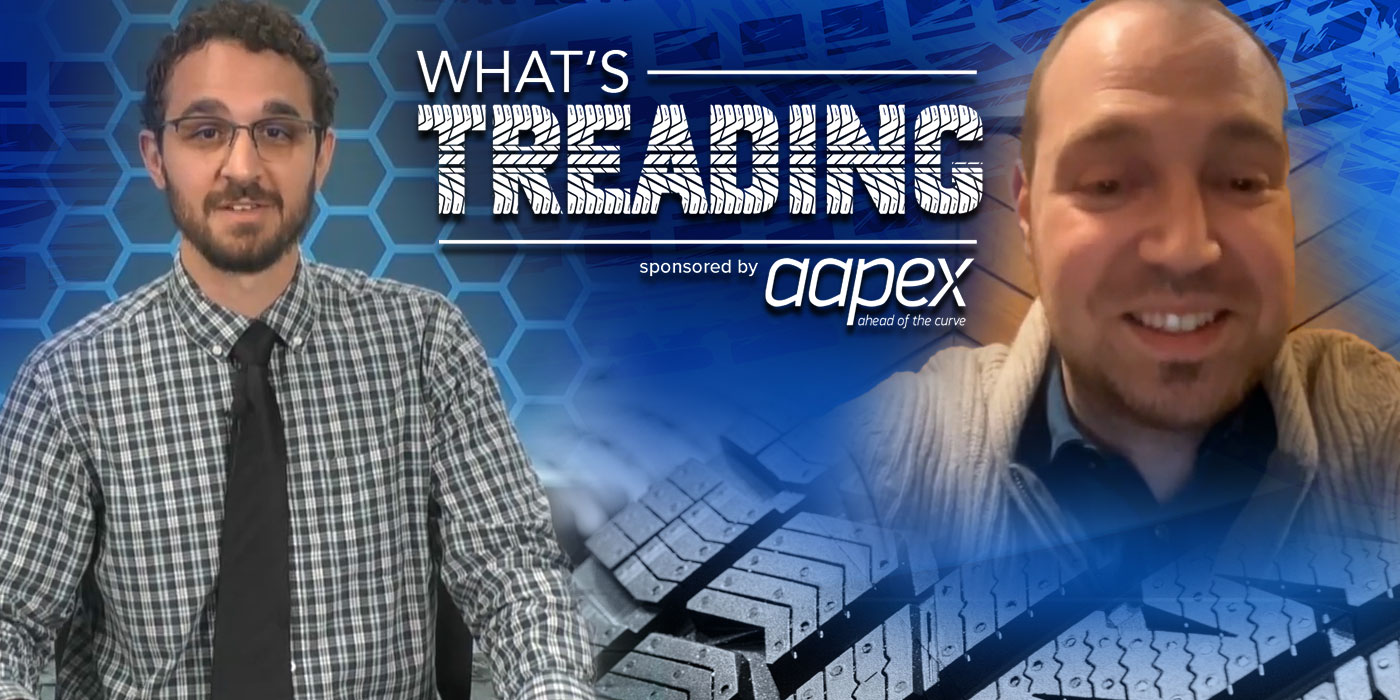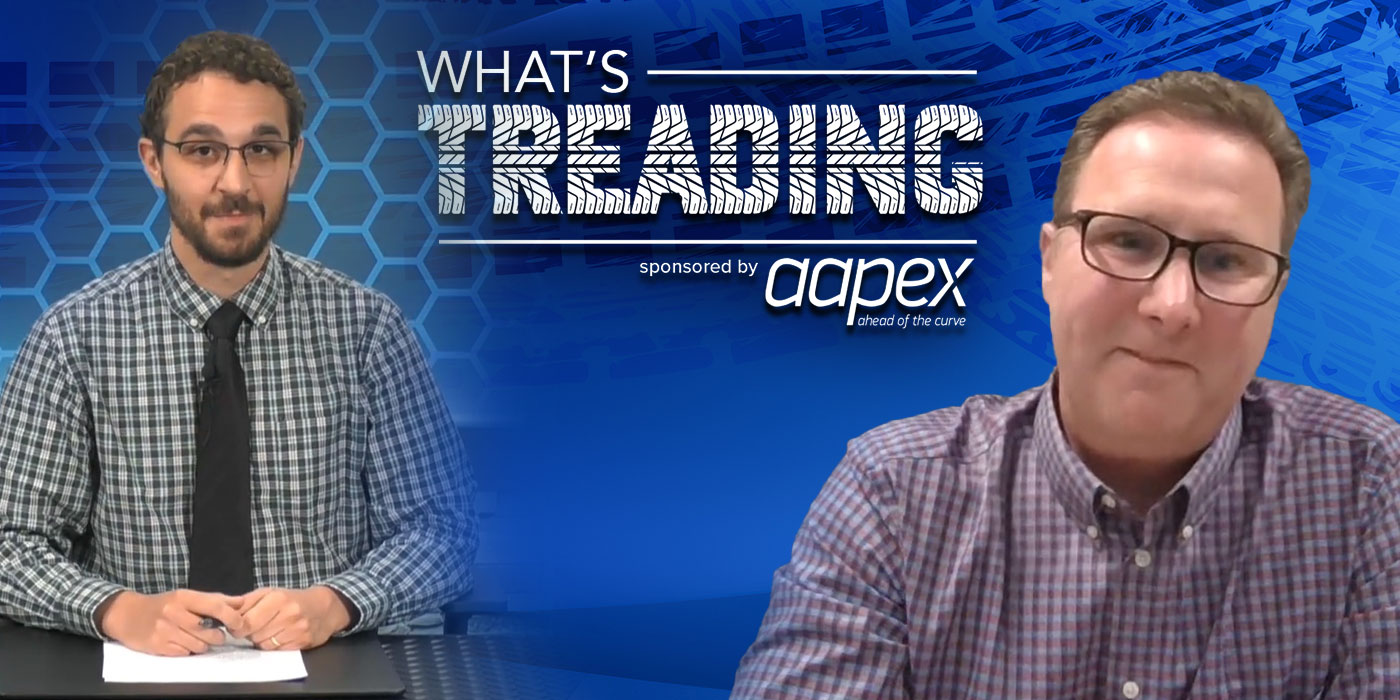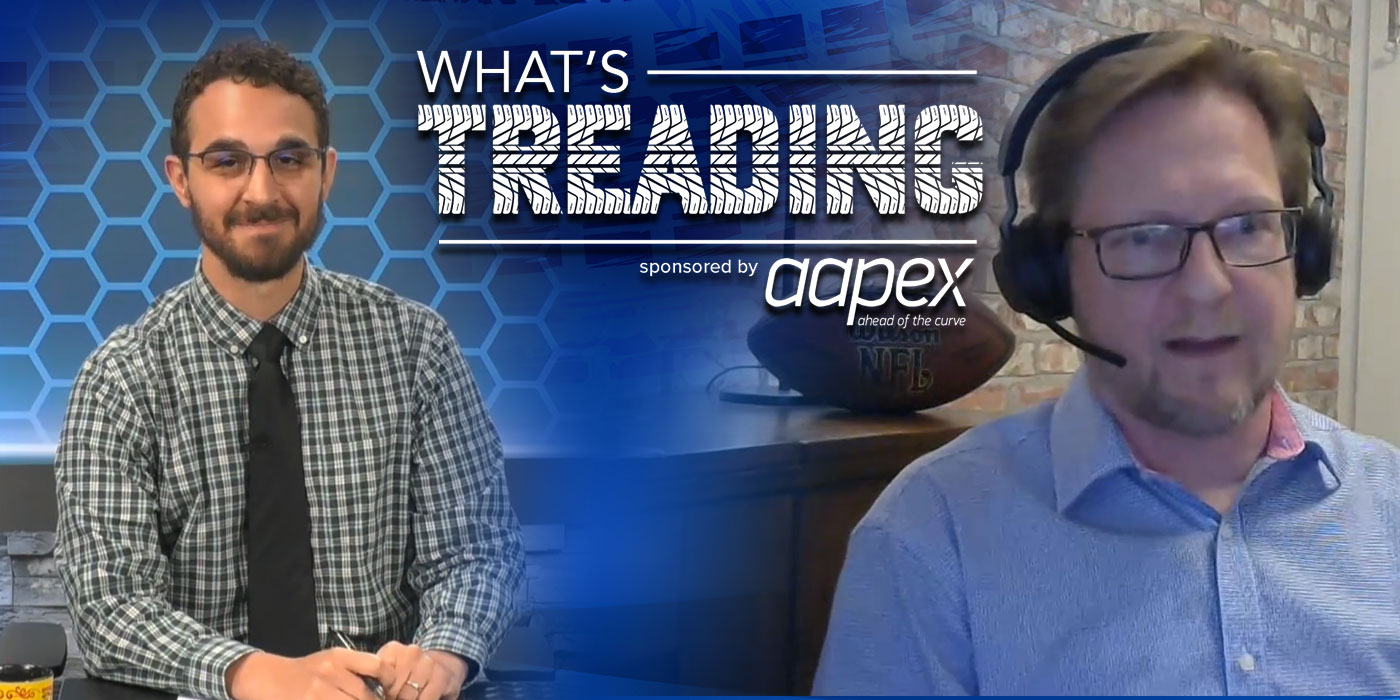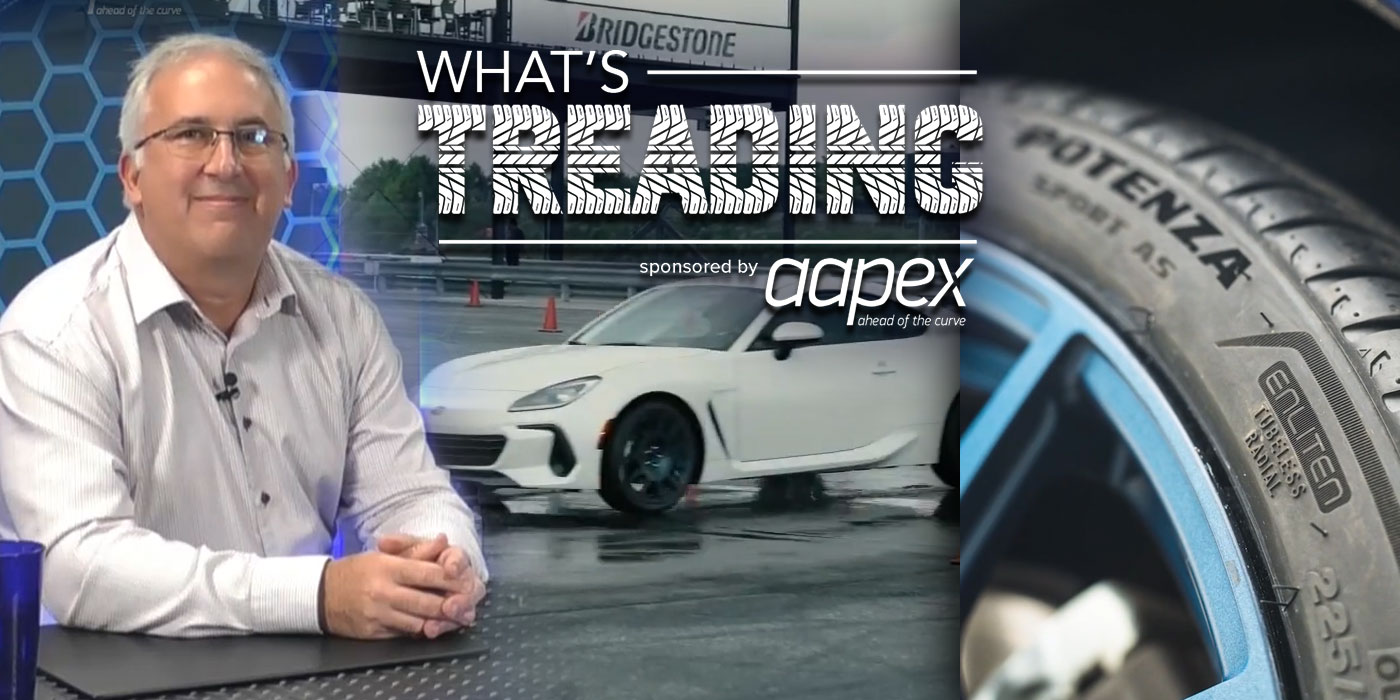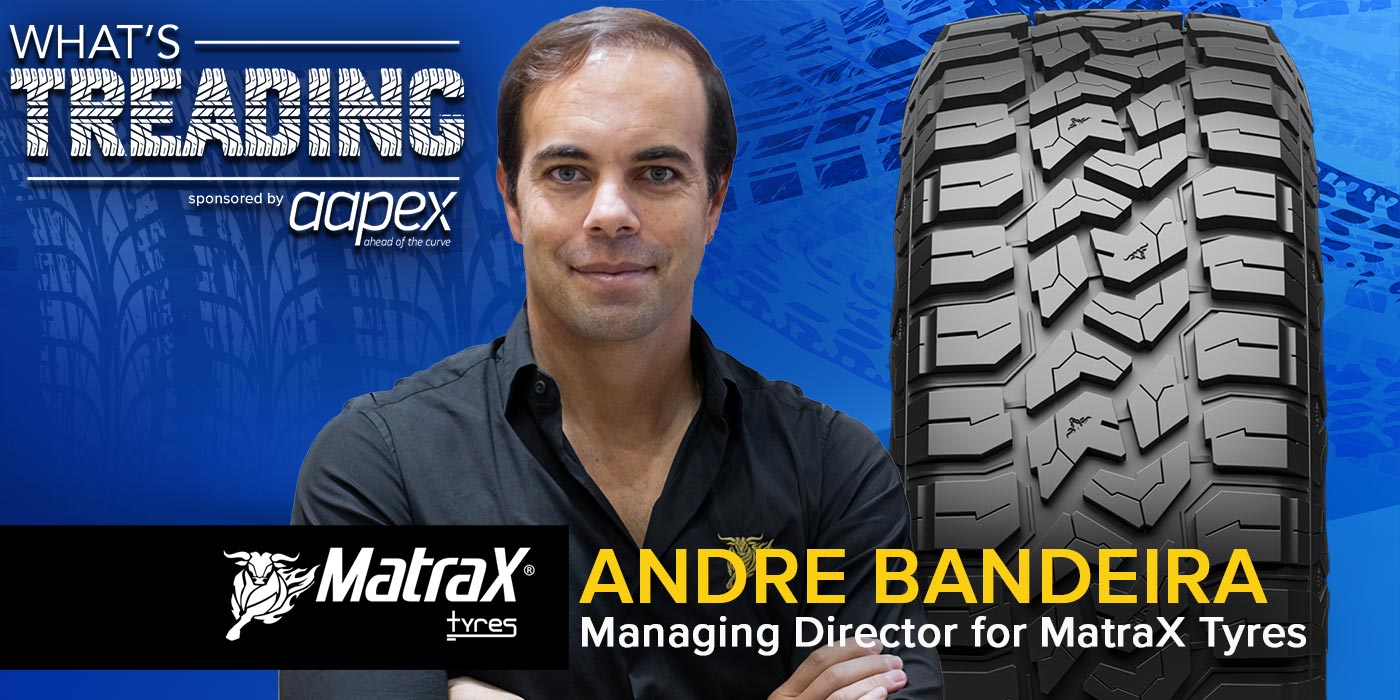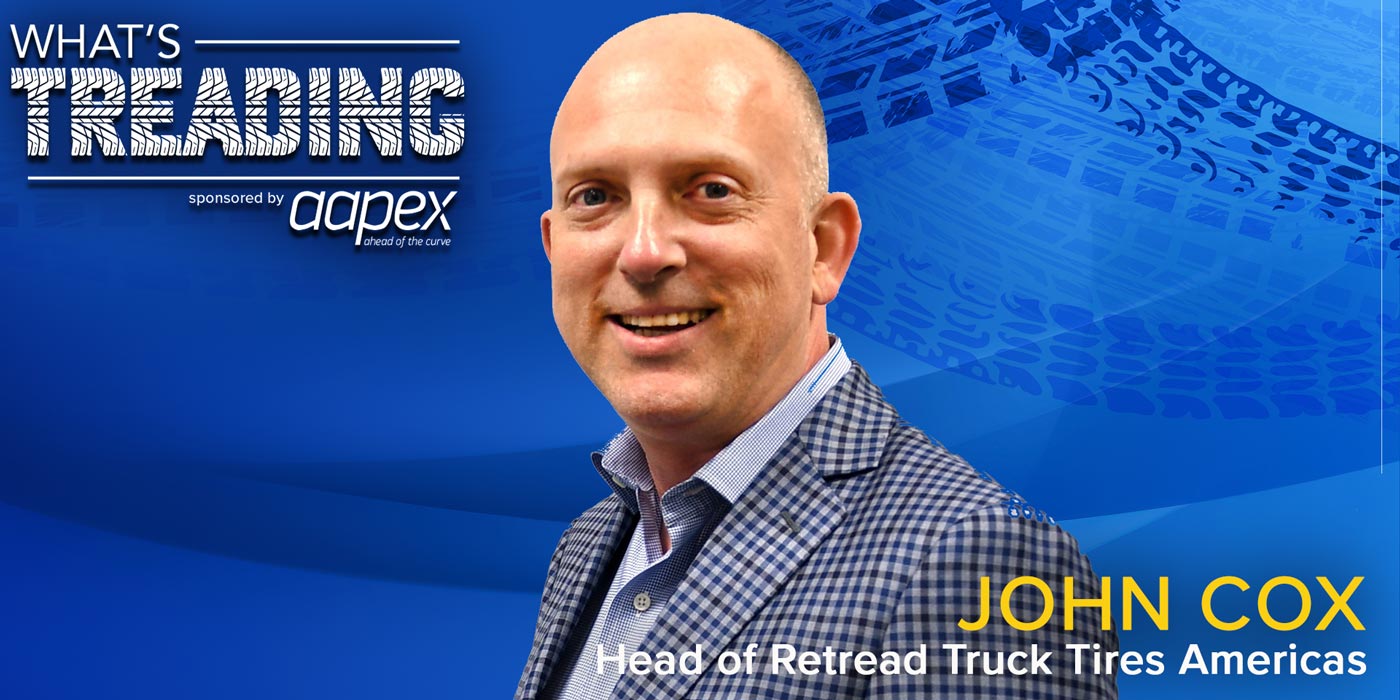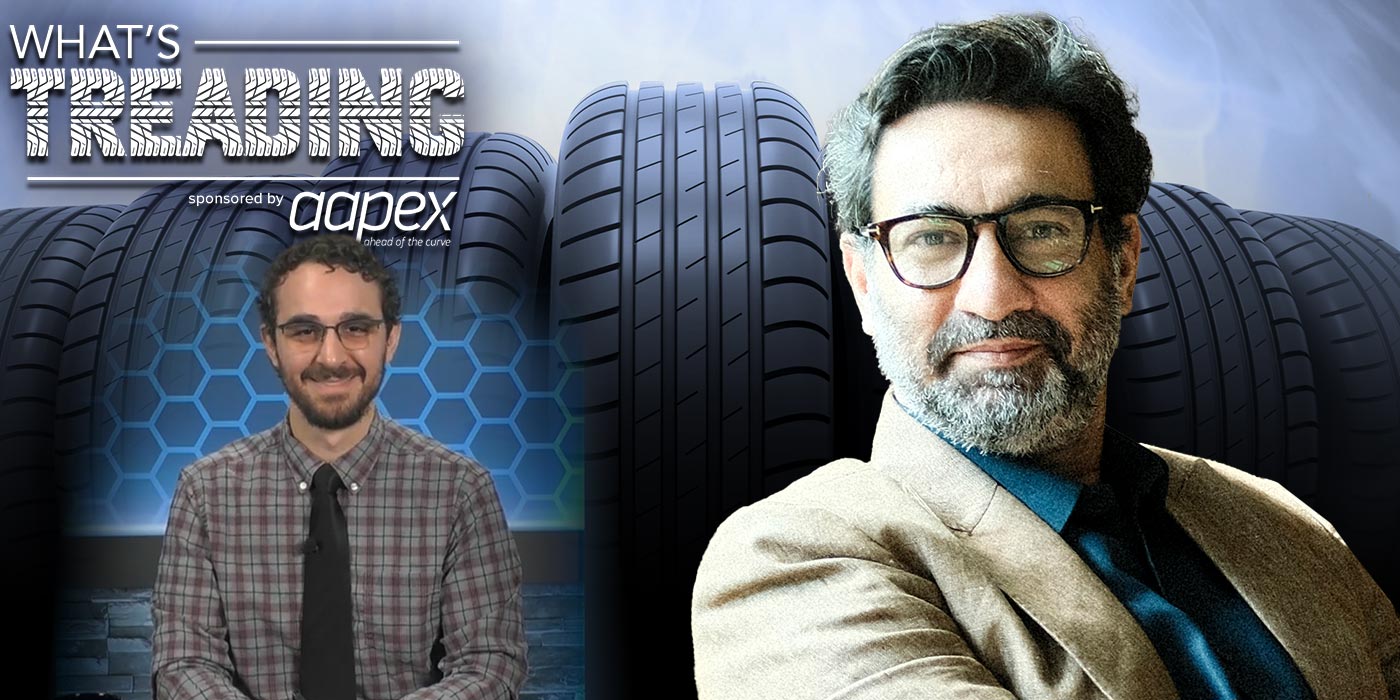When tire dealers tell you, “Keep doing what you’re doing, I just need more tires,” that’s a simple yet hard mandate to follow, especially in an environment where the supply chain is as predictable as the weather. Yet this is what Toyo Tires dealers told Michael Graber, president and CEO of Toyo Tire USA, when he was tapped to lead the company this past April.
“We’re going to continue what we’ve been doing,” he says. “We just need more tires like the rest of the industry.”
Staying in line with that directive, Graber and the Toyo team have laid out plans to get more tires to North American dealers while giving them more products they want in hot tire segments—all-weather and last-mile delivery (or super regional, as Graber calls it), are just two.
“We’re poised for growth,” Graber told us in the latest episode of What’s Treading with Tire Review, presented by AAPEX.
Graber has extensive tire industry experience, with eight years with Toyo under his belt serving most recently as vice president of sales and before that director of truck tire sales. He has also served in sales roles with Michelin and in the agricultural and waste industries.
In this episode of What’s Treading, Graber details key tire segments that are growth areas for Toyo and how the company’s newest plant is slated to serve North American tire dealers. Listen below!
Read the full interview below or subscribe to the audio podcast on Apple Podcasts, Spotify and Google Podcasts. You can also watch the video version of this podcast on YouTube.
MW: You’ve recently taken over the helm of Toyo’s North American business, but obviously aren’t new to the industry or Toyo. So in what ways are you most excited to see Toyo Tires grow under your leadership?
MG: I’ve been here for nine years now, so I’ve been here for a lot of growth and a lot of transformation of the company. So, I’m most excited about the chance to lead this company with people I consider friends and colleagues throughout my various roles here. We have a great product. We’re poised for growth. We just need more tires like the rest of the industry. We struggled a little bit with our supply, but we are working on that and the excitement is out there on the Toyo brand. We have opportunities here with great partners in the dealer and distributor ranks along with a committed group here in Cypress, California at our corporate office.
MW: I know part of that growth has come with the launch of the Celsius Sport UHP this past year, Toyo’s UHP all-weather tire. That’s a very specific segment. So I’m curious, why was the UHP all-weather segment attractive for Toyo?
MG: Years ago, we identified the all-weather segment as a need in the market. The customers were asking for something in between an all-season and a pure snow tire. So our engineers went to work and we came up with the Celsius brand of tire line. Through our natural product growth, the UHP segment really stood out to us for new products. A lot of people don’t want to switch to winter tires. We identified that through talking to our dealers. They [customers] want to have something that they can run year-round…so the Celsius really works well, especially in the UHP, it’s flying off the shelves. We released it in March and it’s just really taken off in the market. So, we’re excited. We have more Celsius [products] coming down the pike in different segments. So it’s in line with where we’re growing and really excited about.
MW: So, you’re saying all-weather is a growth segment for Toyo?
MG: Yeah. I think it’s a growth segment really for the whole industry. Toyo, specifically, identified just that need between the all-season and the winter for people who don’t like switching tires. Now, in some markets, you still have to have winter tires. It’s just a necessity, but there are other markets where you might need them for a shorter period of time. During the winter months, the Celsius is really a good option–you don’t have to switch them out and they work well on the dry pavement in the spring and the summer. So it’s a growing market. Other competitors are introducing products in the same segment, but we really are taking off with it here at Toyo on the Celsius brands.
MW: I know the last-mile delivery segment is a huge commercial tire segment. Toyo plays in this segment pretty heavily. For example, the 19.5-inch size is really growing as well as other sizes. So, how is Toyo catering to the last-mile segment right now?
MG: You’re right. It’s a growing segment. Especially with COVID buying habits, we all have bought e-commerce things along the way. Now, you have different parts of the last mile. You have the vans that actually deliver the products to your house. Those are what we call Euro vans or cargo vans. We have a great product for that. The Celsius Cargo is the all-season version and the H09 Plus for the all-season, but beyond just the cargo vans, we also have the trucks that bring those materials to the warehouses to be delivered to the houses. This is where it falls into 19.5-in and the TBR sizes.
We identified the super regional segment as a need for the market and a growing segment even before 2020. We were ready for it when the pandemic hit to have tires that go on the trucks and perform in the way that trucks are used now, instead of the way they used to be used on long, coast-to-coast hauls. You’re seeing more hub-and-spoke style deliveries, quick deliveries and turnarounds, and we need to have tires that perform well in those situations [that offer] high scrub and are fuel-efficient with good traction, but also offer long life. And, by the way, that are retreadable. The customers want it all and we’re here to try to figure out a way to do it.
MW: How do you see that last-mile delivery segment playing a role for tire dealers in their businesses in the future?
MG: I think it’ll play a greater role because the whole industry, rural or urban, is impacted by e-commerce. These vans are everywhere. Small retailers in a rural market will be just as impacted as big retailers or even commercial dealers and bigger markets. I think it’s an opportunity for everybody. It’s more vehicles on the road, frankly. The tires wear quickly because of the way they’re used. It’s high mileage, it’s high scrub, it’s high utilization. So it’s an opportunity for our dealers to get repeat business even multiple times a year on the same vehicle. It’s an opportunity for service as well. It’s a big win for the tire industry. I think all the manufacturers are focused on having good products to supply those trucks.
MW: Switching gears, I wanted to talk about supply chain. I know it’s something that’s on everyone’s minds. It’s a headache for the whole industry, and a lot of manufacturers we’ve talked to have said they’ve optimized their supply chain because of the pandemic. Can you describe how Toyo has optimized its supply chain in recent years?
MG: We really were impacted heavily by the supply chain bottlenecks, especially tires coming from Asia. We import about 55% of our tires from Asia, Japan and Malaysia, so we really suffered from the shipping container shortage and just the slowdown.
The biggest thing we’ve done that we’re really excited about is we’re opening a new plant that should be online in July for initial production. We should start seeing tires in the US, maybe in the first part of next year, 2023. That new plant is in Serbia. We currently source from four factories worldwide, and this will give us a fifth. A lot of the tires out of Serbia are earmarked for North America and the US. So, we will be bringing tires in from Asia through the West Coast and from Europe through the East coast to try to maximize our availability and get the tires to the customers quicker. The one thing we hear from the customers is we want the tires faster. We want more of them, and what can you do to get us more tires? So, this is what we’re doing. We invested during the pandemic. We didn’t slow down our investments. We added to it. We sort of doubled down on the growth opportunities, and hopefully, we’ll be reaping the benefits of that here in the near future.
MW: Is there a timeline for when that product will be able to come here and when that factory will be at full capacity?
MG: Full capacity will probably be mid-year next year. We’ll start seeing some supply in the third and fourth quarter of 2022 in certain patterns, but we’ll start with one building machine and then grow up to full capacity probably next year. We’re really excited about it. Some of the unrest in Europe has probably created more supply for us here in the US. We’re ready to sell the tires when we get them. We’re making a lot of US sizes, and this will also give us some efficiencies at our White, Georgia, factory, where we make a lot of our like truck products. We’ll be able to optimize that plant for the US market by getting some of the exported tires out into the other plants and the rest of the world.
[During the pandemic] our Georgia plant was impacted by raw material shortages and labor, like everybody else. During the beginning of the pandemic, we had a lot of supply. We had plenty of inventory, what our dealers were telling us back then is they expected business to go down significantly. So we did slow down production to match demand. As we all know, the business didn’t really slow down as much as everyone predicted. So, we quickly got that back up to speed, but we did have some slowdowns in 2020, and that never really recovered until very recently…So we were impacted [in Georgia], we made some decisions back then that were the right decisions, but we are back up to full capacity and increasing. We’re out of space there, frankly. We can’t really expand that plant. What we can do is make it more efficient, get some tires into the other plants around the world and build the US truck tires in that plant in Georgia.
We’re moving a lot of chess pieces around where it makes the most sense to get the tires to the different worldwide markets. We’re anticipating the US will continue to grow with the Toyo brand and we’ll have as many tires as we can get for the US market.
MW: That’s great to hear. Now, Mike, as Toyo Tire USA’s new president and CEO, what would you like Toyo dealers across the country to know about the brand going forward?
MG: Well, I’m happy to tell dealers out there that we’re not going to change much. We are going to continue what we’ve been doing. When I went out to the market as VP of sales, I was out in the market a lot, and all we hear is get us more tires and keep doing what you’re doing. So that’s my intent. We’ve been given the mandate really from Japan. They’re happy with how we are performing here in the US and they want to keep it going. So, my message to our loyal Toyo dealers and customers is you can expect to see what we’ve been doing for the last eight years. Our [retired] leader, Roy Bromfield really taught us how to run the business right and it’s worked. There’ll be changes along the way, but we really feel like we have a good foundation to grow and be good suppliers and good partners with our dealers.


